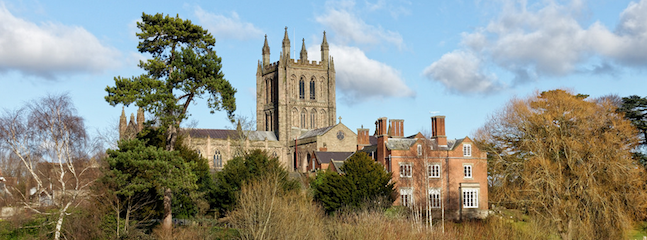
It’s Magna Carta Day, and whilst King John’s original “Great Charter” is famously stowed away in The British Library, you can also head to Hereford Cathedral to get a look at a revision of the charter which was issued in 1217 by Henry III - as well as many other medieval treasures.
One of the most famous documents in history, the Magna Carta is a charter that was originally agreed between King John and a collection of “rebel barons” on this day in 1215.
Known as “bad” King John, the monarch was infamous during his reign for squandering his inherited wealth, declaring expensive wars, enacting heavy taxations, and harsh treatment of opponents, the church and his subjects. This provoked a civil war, until the rebel barons - who had seized control of London in May 1215 - and King John met at Runnymede on 15 June to agree to a peace settlement (the Magna Carta) which curtailed the monarch’s sovereignty and established the privileges of his subjects. It was also the foundation for many of our current laws including Habeus Corpus (the right for no one to be imprisoned unlawfully). This version of the charter is on display at the British Library in London.
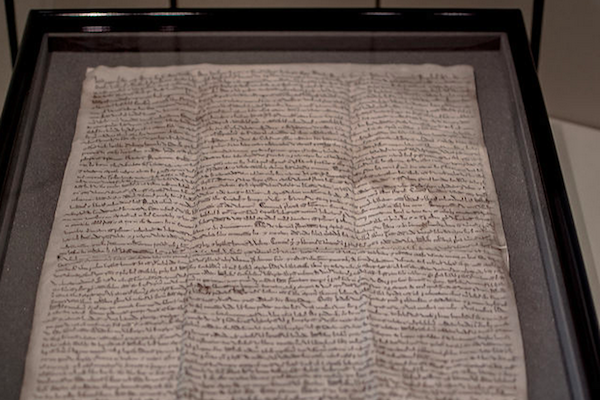 Image Credit: sussexist via Flickr
Image Credit: sussexist via Flickr
However, peace was not achieved. King John incited the Pope to cancel the charter in 1215. Consequently, the civil war ensued for a further year, during which time Prince Louis of France came to assist the rebels with a view to seizing the English throne. John died in October 1216 (his body taken to Worcester Cathedral, which you can read about in our Worcestershire History article) leaving his son Henry III (a minor) to assume sovereignty. A year later in November 1217, the Magna Carta was reissued to avert further civil war, and Henry’s government went on to survive and in fact prosper, enjoying military and naval success, driving out Prince Louis and the rebel Barons.
The charter has since undergone numerous revisions until it was enshrined in written law in 1297, but it is the 1217 version that is on display at Hereford Cathedral, a beautiful medieval style place of worship in Herefordshire. The cathedral also possesses the only surviving copy the letter King John sent from Runnymede to the Sheriff of Gloucestershire - the letter is known as the King’s Writ - asking for the terms of the original charter to be broadcast. You might have a hard time understanding the medieval English it’s written in, but you can read a modern day translation here.
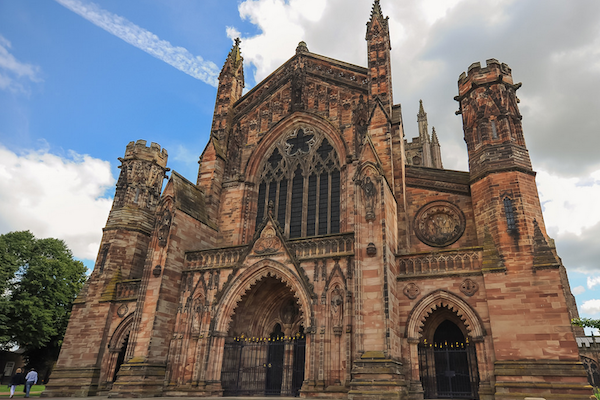 Image Credit: David Cotton via Flickr
Image Credit: David Cotton via Flickr
As well as the 1217 Magna Carta, there are many other medieval treasures to discover if at Hereford Cathedral. Don’t miss the display of the Mappa Mundi. Drawn on a sheet of calf skin 1.58 x 1.33 metres in size, the Mappa Mundi dates back to the 13th Century and is the largest medieval map of the world that is known to exist. But this is not like any old Ordinance Survey with contour lines and A-roads. Not merely geographical, the map also features illustrations of the history of the humankind and natural wonders, including depictions of 15 biblical events, 33 plants and animals (and “strange creatures”), 32 peoples of the world and 8 scenes from classical mythology.
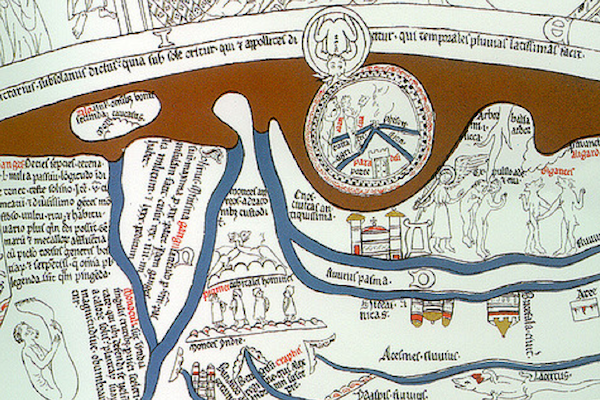 Image Credit: Peter via Flickr
Image Credit: Peter via Flickr
Finally, before you leave Hereford’s hotbed of historical significance, check out the Cathedral’s Chained Library. Housed in a specially designed chamber replicating the library’s original arrangement in 1611, each book has chains attached to the front cover, allowing them to be taken from the shelf and read at a desk, but never entirely removed from the bookcase. This was a common security system in European libraries from the Middle Ages to the 18th century, but Hereford’s is the largest to survive with all its chains and locks undamaged.
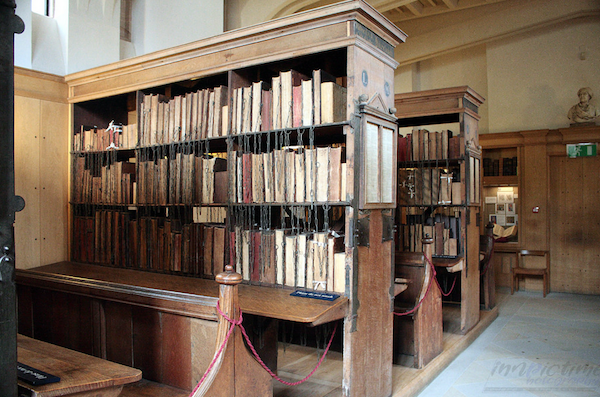 Image Credit: Howard G via Flickr
Image Credit: Howard G via Flickr
Hereford Cathedral is located at Cathedral Close, Hereford, HR1 2NG